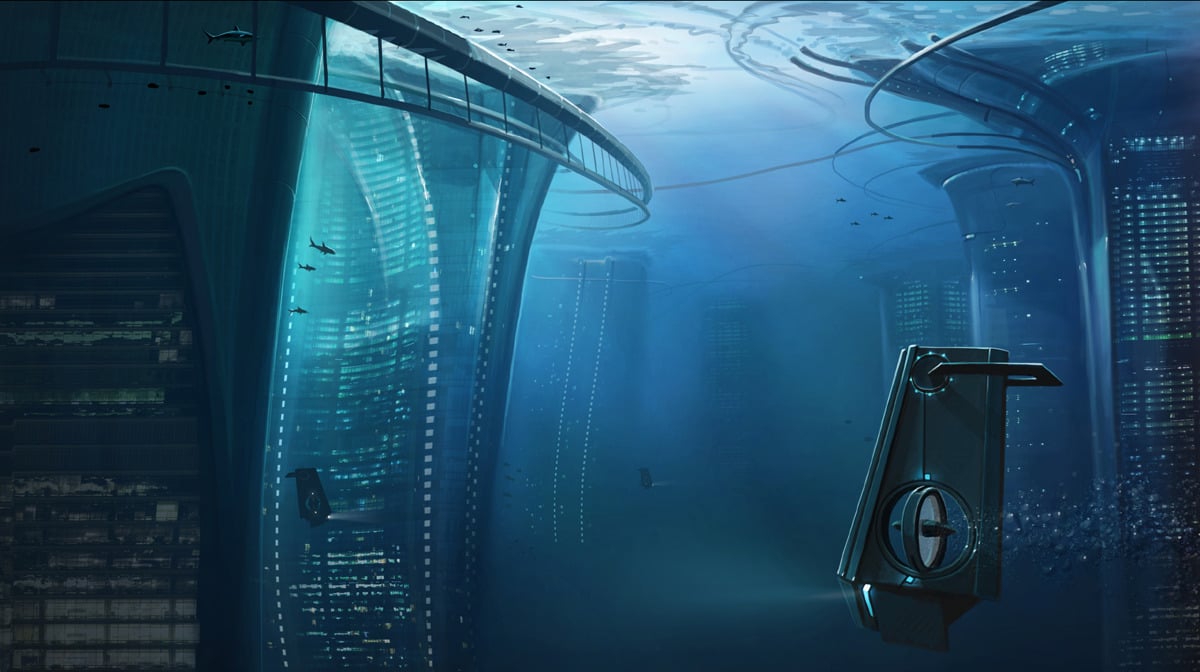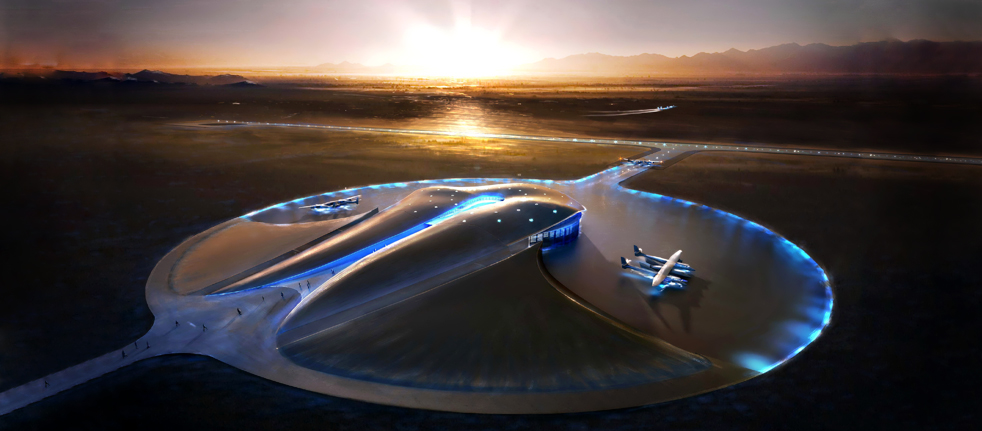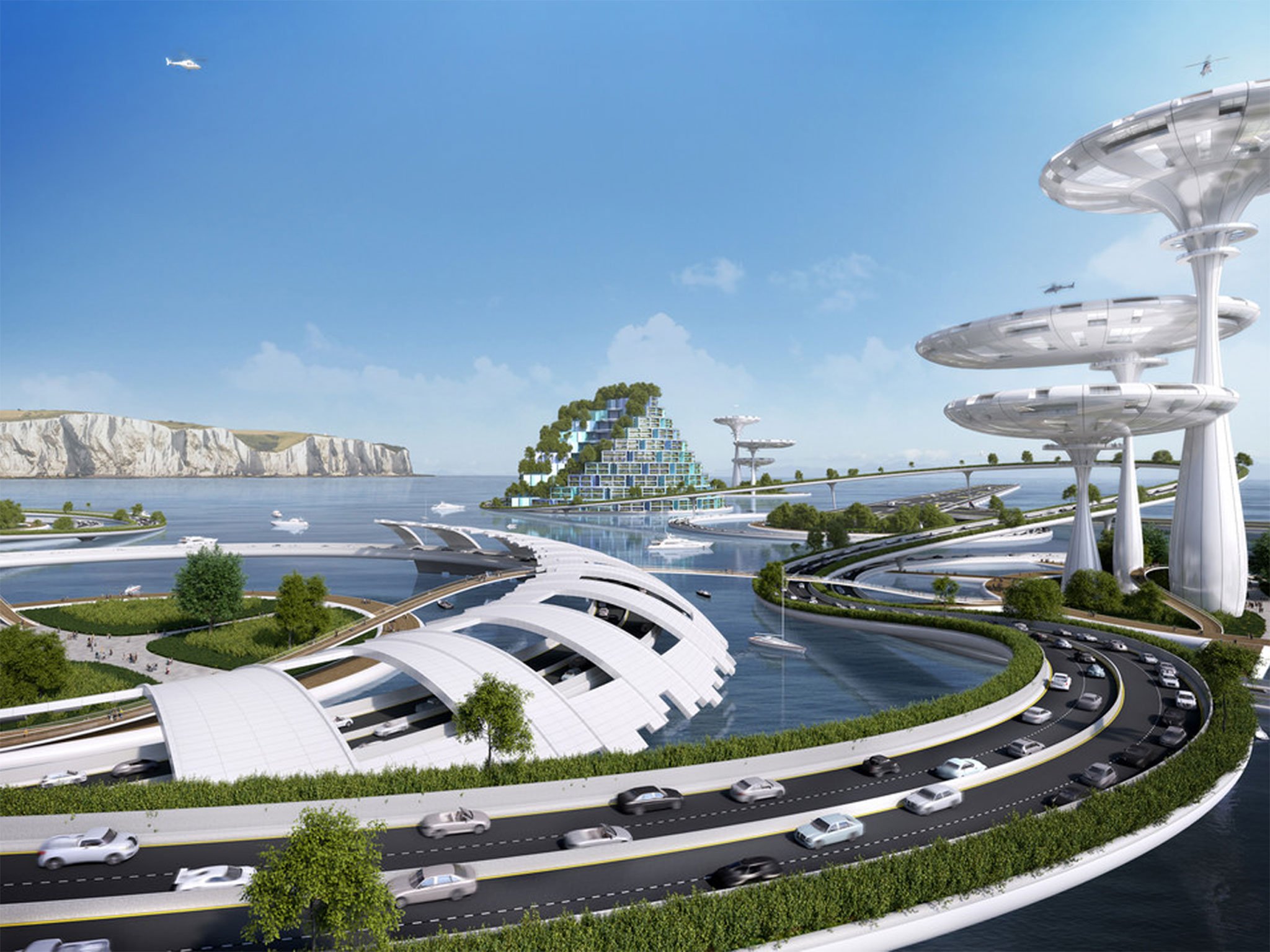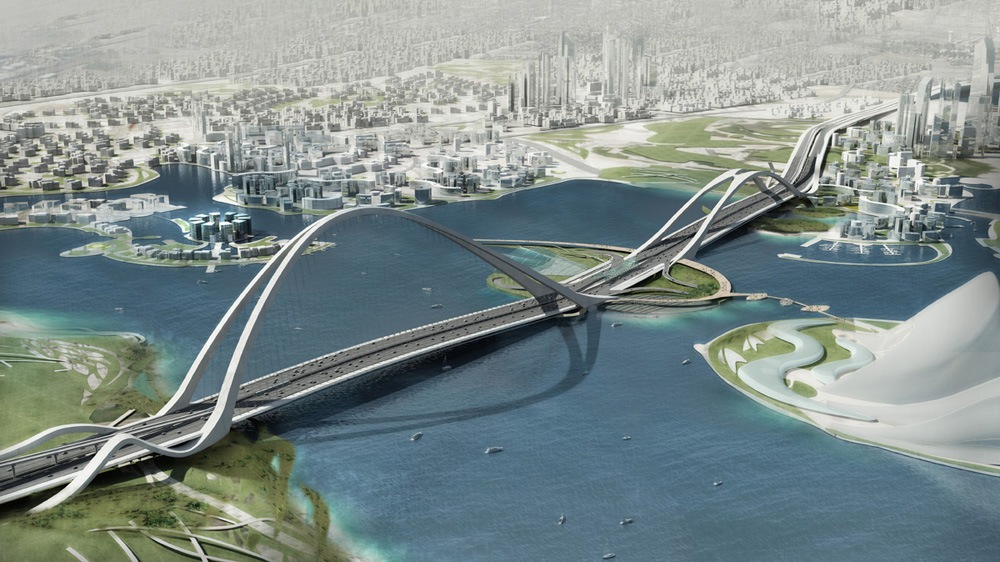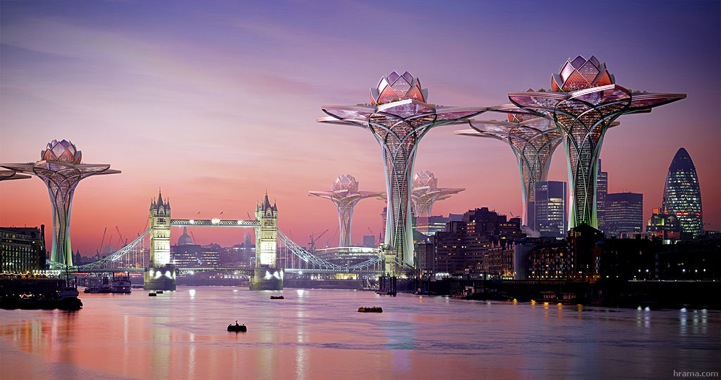Guest post by Paul Sukys
In 1974, Robert Heilbroner produced a dystopian book entitled The Human Prospect, in which he argues that humanity must meet three key global challenges if the human race is to survive. Those challenges are (1) uncontrolled population growth, (2) the breakdown of the global environment, and (3) the prospect of global warfare. After presenting these challenges, Heilbroner explores what it would take for the nations of the world to solve each one. The results of Heilbroner’s study are less than optimistic. The world, he predicts, will only solve these problems if some radical transformation takes place that forces the privileged nations of the world to take their eyes off their own situation and focus instead on the global picture. Predictably Heilbroner holds little hope that such a transformation will take place. Instead he sees a dystopian descent into poverty, terrorism, and war, all of which take place against a backdrop of dwindling energy reserves, increased starvation, extensive epidemics, economic upheaval, and impending environmental disaster.
Heilbroner revised his book in 1984, and once again in 1991, and neither time saw any reason to change his predictions. The international system may have changed somewhat since Heilbroner first penned The Human Prospect, but the problems remain the same. Unlike Heilbroner’s day, during which the international system revolved around the Cold War, the international system today focuses on two new global opponents who are about to face one another in a conflict that will dwarf all previous international encounters. Those two powers are the United States and China. Many analysts today see this conflict in apocalyptic terms, few see the result as pleasant, and most predict a dystopian outcome. In this article we are going to concentrate on the dystopian predictions of one such writer, Olaf Stapledon. Stapledon was a British novelist who, in the 1930s, wrote an epic science fiction narrative that is, in reality, a thinly disguised polemic worth close examination today.
Stapledon was able to make such predictions because he grasped two very simple things. First, he understood to a great extent the nature of the global system as it existed in his time period and he had the insight to follow the line of trajectory that system was following into the future. Stapledon envisioned a future in which two backstage players of the 1920s and 30s, the United States and China, would gain global dominance. Second, Stapledon also believed that Realpolitik, that is, the political philosophy that declares that leaders have one responsibility, save their own nation from destruction. According to adherents of Realpolitik their theory is now and always has been, the only accurate way of explaining how military and political leaders make real decisions in the real world of global politics. This is why Stapledon predicts a war between China and the United States for regional and global dominance in diplomacy, trade, finance, and military forces.
The Stapledon Dystopia: The Coming Sino-American War
Olaf Stapledon was born in 1886 in Wallasey, Merseyside, England, and educated at Balliol College, Oxford, where he earned a B.A. and an M.A. in history. He later earned a Ph.D. in philosophy at the University of Liverpool. Like many writers and artists of his generation (Ernest Hemingway and Louis Bromfield come immediately to mind), Stapledon was formed by his experiences in the Great War, during which he was an ambulance driver for the Friends Ambulance Unit in France. He was also greatly influenced by Modernism in the 1920s, and later by the Depression of the 1930s. His career as a writer began in 1930 when he published Last and First Men, the novel that was to become the blueprint for all of is later work. Other later works, such as Last Man in London (1932) and Star Maker (1937) are considered to be books that extend the implications of the philosophical and historical themes laid out in Last and First Men.[1]
In Last and First Men Stapledon first presents the details of his dystopian future, which extends for some 4 billion years, covering, as the book’s title suggests, the entire history of the human race, including its ultimate demise.[2] In scope and reach, the novel is unlike any of its peers. Many writers aspire to create future histories of the human race but few, perhaps none, have managed to produce a future history with the breadth and scope of Stapledon’s vision. The book does not proceed along ordinary lines. There is no main character; no single setting, little dialogue, no traditional conflict, and certainly no happy ending. At times, the book reads like a philosophical treatise rather than a work of fiction. The novel reveals the future of humanity through eighteen successive versions of human development, each of which is less appealing and more decadent than the one before. Some genetic leaps, it is true, result in human offspring who possess valuable characteristics. Even these future generations, however, lack basic human values. In this way Stapledon’s work is reminiscent of H. G. Wells’ Time Machine, the plot of which features a time traveler who visits a desolate human future.
Although Stapledon traces the future of humanity to the destruction of the solar system, a period better spoken of in terms of billions of years, he also devotes a great deal of space to the next five hundred years. This is critical because it is within those five hundred years that we see historical predictions that foretell a clash between the United States and China. He manages to make these predictions, first, because he has an innate grasp of the fundamental principles of Realpolitik, especially as those principles apply to the motivations of political leaders; and second, because he has the ability to extrapolate from present political conditions to those that will exist in the future. It is not possible to make such a leap into the future unless the “leaper” knows the ground on which he stands and from which he wishes to “leap.” Stapledon, our current “leaper,” has that knowledge. Thus, he has the foresight and the intuition to see that China would eventually overcome economic, political, and military challenges to become a world power, despite the fact that it was a nation under siege in 1930.[3]
As noted above, Stapledon’s success in predicting these trends results from his clear grasp of Realpolitik. He understands intuitively that, in a world in which there is no central governing authority, nations will act to protect themselves, to preserve their power, and to increase that power whenever the opportunity presents itself. Moreover, and perhaps more to the point, this process is not part of a conscious strategy any more than eating or breathing is a conscious strategy to all living things. The drive to exercise power is simply the natural way that the leaders of nation-states act. Nevertheless, there are several theories that attempt to explain why Realpolitik works. Hans Morgenthau, for example, believes that the drive for power on the international scene occurs because nations are inevitably led by alpha-level personalities who are compelled to exercise their “will to power.”[4] In contrast, Kenneth Waltz suggests that nation-states act to preserve their power simply as a defense mechanism. The leaders of every nation-state know that, if they do not act to preserve their position within the balance of power among nations, someone will come along and take that power and that position away from them.[5] Max Weber and Reinhold Niebuhr argue that the strategy to survive results from the nation-state’s moral responsibility to protect the civic peace of its own citizens[6] and John Mearsheimer suggests that it results from the need to acquire as much power as possible to offset the power of neighboring states.[7]
It is Mearsheimer’s vision of Realpolitik that Stapledon emulates. He envisions a world in which the major powers always seek more power in order to offset the growing power of their main rivals. This is why he pictures each successive war as a contest between two superpowers, first the Franco-Italian War, then the Anglo-French war, then the Russo-German War, followed by the Euro-American War [which occurs after the creation of the European Union] and finally the Sino-American War, between China and the United States.[8] It is this last war that especially fits Mearsheimer’s scenario and the one that most mirrors what is actually happening in the world of the 21st century. This dystopian vision sees two major powers, the United States and China, in a virtual standoff. Stapeldon, however, does not see this power as resulting from military intervention. Instead he sees it as resulting from the intermingling of two powerful economic systems. It is in this way that Stapledon predicts globalization. He sees globalization as a process that begins peacefully but that ends in a war between the last power blocs on the planet.
Stapledon: The Four Dystopian Predictions
Before describing the ultimate confrontation between China and the United States, however, it will be helpful to take a closer look at Stapledon’s track record in relation to his predictions about globalization and the nature of the Sino-American relationship. Put simply, Stapledon’s predictions are correct in four fundamental ways: (1) First, Stapledon predicts that the tension that will exist between Beijing and Washington in the future will have an economic base founded on the problems associated with globalization; (2) Next, he forecasts a growing split between the two countries based on cultural differences; (3) Third, he believes that the greatest source of controversy between the two superpowers will be associated with the American belief that Western values, such as democracy and human rights, are universal and ought to be enforced globally; (4) Finally, Stapledon predicts that the source of the ultimate armed conflict between the two nations will be energy reserves in general, and oil in particular.
The First Prediction: The Globalization Crisis
Stapledon’s first and most obvious prediction is that the future relationship between China and the United States is primarily economic and arises within a globalized world that has come to depend so much on the exchange of goods and services and the interrelated investment opportunities that national borders have become nearly irrelevant.
The planet was now a delicately organized economic unit, and big business in all lands was emphatically contemptuous of patriotism. Indeed the whole adult generation of the period was consciously and without reserve internationalist.[9]
Stapledon’s remarks, written in 1931, foreshadow the words of Anthony Giddens in his book, Runaway World: How Globalization Is Reshaping Our Lives.[10] In the opening chapter of this work Giddens describes globalization in words echo the same sentiment:
The global market place, they (the radicals) say, is much more developed than even in the 1960s and 1970s and is indifferent to national borders. Nations have lost most of the sovereignty they once had, and politicians have lost most of their capability to influence events. It isn’t surprising that no one respects political leaders any more, or has much interest in what they have to say. The era of the nation-state is over.[11]
Stapledon accurately predicts the trade and financial entanglements that now exist between the United States and China, when he writes that “American cutlery, shoes, gramaphones, domestic labour-saving devices”[12] had flooded the Chinese economy, and that China experiences an invasion of “American industry within her.”[13] Admittedly, in the world of the 21st century, the invasion of American industry into China has taken a form somewhat different from Stapledon’s vision. Nevertheless, the economic entanglement predicted by Stapledon has become a reality.[14]
The Second Prediction: The Cultural Conflict
Second, Stapledon accurately predicts the cultural conflict between the two countries. In this regard, he has hit the mark in several different ways. First, he accurately points out that, on one level, the two cultures are at odds with one another. For example, he shows that Americans are attached to their democratic ideals and their notions of human rights while the Chinese are more focused on the greater good of the entire community.[15] Stapledon puts it this way:
American culture was wholly concerned with the values of the individual life (and) was more sensitive than the Chinese with regard to the well-being of humble individuals. Therefore, industrial conditions were far better under American than under Chinese capitalism.[16]
In contrast, Stapledon sees China as a society that emphasizes the good of the entire culture over the good of the individual. This spirit is evident in its economic policies as well as the character of its government and culture. In describing these principles Stapledon focuses on the Chinese political system, in general, and the ruling party in particular. Although he calls the ruling party the Nationalist Party, he describes a party that has much more in common with today’s Chinese Communist Party (CCP) than with the “real life” Nationalist Party. For example, Stapledon’s Chinese Nationalist Party is “(m)odelled originally on the Bolshevic Party of Russia.”[17] In addition, the Chinese people approve of the Party and its activities, despite the fact that it consolidates power in the hands of a few. In Stapledon’s novel, the people depend on the Party to do what is best for the people. The Chinese believe that the Party represents the will of the people. This is why they can declare that their system is more democratic than the American system which relies on elections the results of which may or may not represent the will of the majority.[18] Stapledon’s fictional National Party, then, is very similar to the Chinese Communist Party (CCP) as it operates in China today. In today’s CCP, as in Stapledon’s Nationalist Party, the leaders are trusted despite the fact that they stand above the law. According to Stapledon’s forecast, all of this will create a sense of national pride in the Chinese people. This new pride will be displayed in the rebirth of nationalism, the dawn of Asian manifest destiny, and a sense that its economy and political institutions are far better than those of the decadent Americans.[19]
Stapledon also describes the rebirth of Chinese cultural pride by noting that, “(i)n China a concerted effort had been made to purge the foreign element from her culture . . . and the study of Chinese classics was once more compulsory in all schools.”[20] Stapledon’s prediction here reflects the actual state of China today. The CCP, like Stapledon’s fictional Nationalist Party has promoted a renewed interest in Chinese culture This “real life” rebirth of national pride in China is also seen in the development of position papers and manifestos, such as the “Harmonious World” statement issued by former General Secretary Hu Jintao.[21]
The Third Prediction: Western Universalism
Third, Stapledon predicts that another source of tension between China and the United States will be the American proclivity to force its cultural values on all nations, including China, in the belief that its values are universal.[22] Stapledon explains that, “America, indeed, professed to have outgrown nationalism and to stand for global and cultural world unity. But she conceived of unity as a unity under American organization; and by culture she meant Americanism.”[23] Later he adds that the Americans in his fictional world, “assumed that America was the guardian of the world’s morals.”[24] This picture of the United States as the purveyor of universal values and as the creator of a world culture based on those values clearly mirrors the world situation today
Moreover, Stapledon also predicts that whatever the economic, political, military, and philosophical reality might be, the cultural influence of the United States on China and the rest of the non-Western world is so overwhelming in the form of American music, art, movies, and so on, that it has resulted in an Americanized planet:
(T)he Americans were rapidly changing the whole character of man’s existence. By this time every human being throughout the planet made use of American products, and there was no region where American capital did not support local labour. Moreover, the American press, gramophone, radio, cinematograph, and televisor ceaselessly drenched the planet with American thought. Year by year, the aether reverberated with echoes of New York’s pleasures and the religious fervours of the Middle West. What wonder, then, that America even while she was despised, irresistibly moulded the whole human race.[25]
Stapledon’s words foreshadow the sentiments of James Laxter, of York University, who in his book Empire, explains that:
Cultural power is the fourth pillar of American global power. This is one of the ways in which the American Empire differs from its predecessors . . . It has been in the realm of mass culture—films, television, music—that American culture has become a truly global culture. This has had the effect of transmitting American values, products and attitudes to peoples around the world in an entirely novel way . . . Representatives of American film and television industries, with the full support of the American state, have worked ceaselessly throughout the world since the end of the second World War to keep the door wide open to the importation of American cultural products . . .The United States government guards American cultural products as important tools in its effort to win foreigners over to the acceptance of the American view of the good life and how society should be organized.[26]
In these first three predictions Stapledon has set the stage for his fourth and final prediction that of a dystopian world conflict that pits China against the United States in a major global war that totally changes the face of civilization and, in the end, causes its ultimate downfall.
The Fourth Prediction: The Final Battle and the End of the First Men
Stapledon’s fourth dystopian prediction relates to the final conflict between the United States and China. Stapledon predicts that the final conflict will be an energy war started by the discovery of an economical way to remove the vast oil deposits that exist under the ice in Antarctica. Before this conflict, however, Stapledon foresees the energy reserves of the planet placed under the control of the World Fuel Control Board, a cosmopolitan agency that establishes a set of global rules for the use of energy reserves. The rules work rather well until an American company discovers a way to remove oil deposits under Antarctica. The Americans claim the right to use the oil for their own domestic purposes because without their advanced techniques the oil would have remained inaccessible. China, in contrast, argues that the oil reserves are subject to the distribution protocols of the World Fuel Control Board which, by no coincidence is controlled by the Chinese. The events trigger a rebirth of nationalism as the two camps begin to tangle over the question of the oil reserves. The diplomatic maneuvering continues for some time, until an incident unrelated to the actual oil problem, ignites the Sino-American War.[27]
The war is a long and drawn out destructive campaign, characterized by the use of chemical and biological weapons. As is often the case, those who suffer the worst are not the Americans or the Chinese, but their allies.[28] Thus, Africa falls to American control, while Europe comes under the rule of China. Both Britain and Japan are devastated, and areas of the Middle East become an “uninhabitable no-man’s land.”[29] Eventually, however, China is victimized by a new biological weapon used indiscriminately by the Americans who hold the military advantage over the Chinese. However, the strain of the war on the American economy sparks episodes of domestic violence between the “haves” and the “have-nots” in the United States. The war ends with the establishment of a global government, referred to as the World Financial Directorate.[30]
Despite this “happy ending,” Stapledon is not pleased with the outcome of the war. Nor does he see the conditions that result from the peace agreement and the establishment of the global government as a utopia. Instead, he depicts a dystopian world that is, on the surface, materialistically rich, but at its core, spiritually destitute.[31] Part of this schizophrenic condition is due to the fact that the world has reached this point of affluence by killing large numbers of people during the Sino-American World War. Part of the dissonance also results from the fact that, although the population is affluent, this affluence is not distributed in an even-handed fashion. Even in a world that is governed by a single autocratic government, there exists an elite who live in luxury at the expense of the poor.
However, according to Stapledon, the worst aspect of this dystopia is its moral bankruptcy. He blames this moral insolvency on three interrelated factors. First, the new world has adopted an Americanized philosophy of life. In his fictionalized future, Stapledon blames this transformation on American biological weapons that destroyed the ability of the Chinese to resist the Americanization process.[32] The Americanization process leads to a second reason for the moral insolvency of the post war dystopia, and that is an obsession with the power of science. Science in this post war world has replaced religion. There is, in fact, a point at which religion and science are reunited but this is simply a facade that permits science to take over the lives and the beliefs of the people.[33] This leads to the final cause of the moral breakdown and that is an obsession with progress that leads to a frantic lifestyle of endless activity. This activity takes many forms, including work, flight, dance, and athletics, but each form holds one thing in common; it is ultimately pointless. This obsession with movement keeps the people occupied but also transforms them into slaves.[34]
Two rather poignant passages in the book illustrate Stapledon’s focus on the contrast between the materialistic wealth of the people and their spiritual emptiness. These two passages, more than any other in the book, represent the core of his empty dystopian future. The first passage describes the day to day material wealth of the population.
Every individual was a well-fed and physically healthy human animal. He was also economically independent. His working day was never more than six hours, often only four. He enjoyed a fair share of the products of industry; and in his long holidays he was free to wander in his own aeroplane all over the planet. With good luck he might find himself rich, even for those days at forty; and if fortune favoured him, he might yet expect affluence before he was eighty, when he could still look forward to a century of active life.[35]
This paragraph is followed immediately by this next passage:
But in spite of this material prosperity, he was a slave. His work and his leisure consisted of a feverish activity, punctuated by moments of listless idleness which he regarded as both sinful and unpleasant. Unless he was one of the furiously successful minority, he was apt to be haunted by moments of brooding, too formless to be called meditation, and of yearning too blind to be called desire. For he and all his contemporaries were ruled by certain ideas which prevented them from leading a fully human life. Of these ideas one was the ideal of progress. . . . For the all-pervading idea which tyrannized over the race was the fanatical worship of movement.[36]
All of this is, of course, an allegory. Stapledon does not really expect that the entire human race will be absorbed in pointless activity. Instead, he sees Western philosophy, Western economics, and Western politics as the root of all that is decadent in this future world. Thus, his dystopia results not so much from an obsession with progress as with the American desire to dominate the planet. In this way, Stapledon’s dystopia results not because the Sino-American War destroys most of the planet but because American materialism flourishes in its aftermath.
Despite all of this, the reader can take some comfort in the fact that, despite his grasp of Realpolitik, many of Stapledon’s predictions, especially those he foresaw in the years immediately in front of him, were proven to be completely wrong. For example, he misses the rise of fascism in Germany after the Great War and the Treaty of Versailles. Instead, he foresees a new German Renaissance, which reveals that “the Germans, in spite of their practical genius, their scholarly contributions to history, their brilliant science and austere philosophy, were at heart romantic.”[37] In contrast, his post-war vision of France and England is less flattering. He pictures these two nations (and Italy as well) succumbing to war-like tendencies that lead to two fatal confrontations, the first between France and Italy, and the second between England and France. The Anglo-French War is fought to a standstill, although much of London and most of Paris are destroyed. After the Anglo-French War, the two devastated nations are placed under the trusteeship of the League of Nations which is responsible for reconstructing both ruined nations. It is only after this confrontation, that Germany begins, once again, to rise to a position of power in Europe. However, German ambitions are checked by similar aspirations on the part of the Russians leading to a third European war, the Russo-German War, during which large parts of both nations are rendered uninhabitable.[38]
In the details, Stapledon’s story and actual historical fact differ significantly. France and England did not go to war with each other, but instead fought Germany, and both ended up as victors in that war. Germany, on the other hand, was broken. Its infrastructure was destroyed, its people homeless, its industry smashed, its military shattered, and its spirit broken. Stapledon also misses the global nature of the conflict. He leaves out the involvement of both the United States and Japan, misses the use of saturation bombing, focuses instead on chemical weapons, and fails to forecast the most morally reprehensible event of that time period, if not of all remembered history, the Holocaust. On the other hand, if we look at Stapledon’s predictions in terms of probabilities and trends, rather than in terms of certainties and individual historical events, his predictions give us pause. Stapledon envisions a Europe shattered by war, forecasts the failure of the League of Nations, predicts a devastating conflict between the Germans and the Russians, foretells the invention and actual wartime use of atomic weapons, imagines the formation of the European Union,[39] and anticipates the rise of American hegemony. There is, therefore, still much to be learned from his perceptive, if dismal, allegory.
[1] Leslie A. Fielder, Olaf Stapledon: A Man Divided (Oxford: Oxford UP, 1983), 223.
[2] Our examination of Last and First Men will follow a line of study that is similar to the approach that would be taken by a Literary Darwinist. The underlying thesis of literary Darwinism is that human beings act as they do because such principles are located in their DNA as the result of the survivalist direction imposed on them by natural selection. Human behavior is, therefore, neither random nor accidental, nor, on the other hand, totally subject to the whims of human volition (although volition as a behavioral element cannot be underrated). Therefore, the examination of a text will reveal in most (though not all) cases universal patterns that can then be used as a model for future behavior. D.T. Max. “The Literary Darwinists,” The Best American Science Writing 2006. ed. Athul Gawande (New York: Harper, 2006), pp. 194-197.
[3] The Japanese actually invaded China on July 7, 1937. See Robert Kee, The World We Left Behind: A Chronicle of the Year 1939 (London: Weidenfield, 1984), 243. However, before that time Japan had already defeated the Chinese in hostilities that ended in 1895. At that time the Japanese annexed Taiwan. In 1905, the Japanese also defeated Russia in the Russo-Japanese War and, as a result gained far-reaching concessions allowing them to control much of Manchuria. After World War I, Japan also succeeded in retaining control over the Shantung peninsula in China, a territory that the Japanese had seized from German control during the Great War. See Margaret Macmillan, Paris 1919: Six Months that Changed the World (New York: Random House, 2003), 310-311.
[4] John J. Mearsheimer, The Tragedy of Great Power Politics (New York: Norton, 2001), 19.
[5] Mearsheimer, 19.
[6] Max Weber, “Politics as a Vocation,” in The Great Political Theories: From the French Revolution to Modern Times, eds. Michael Curtis (New York: Harper, 2008), 427. Reinhold Niebuhr, Moral Man in an Immoral Society: A Study in Ethics and Politics (New York: Charles Scribner’s Sons, 1932), 234.
[7] Mearsheimer, 21.
[8] Stapledon, Last and First Men, 19-51.
[9] Stapledon, Last and First Men, 48.
[10] Anthony Giddens, Runaway World: How Globalization Is Reshaping Our Lives (New York: Routledge, 2000), 8.
[11] Giddens, 8.
[12] Stapledon, Last and First Men, 43.
[13] Stapledon, Last and First Men, 43.
[14] See for example: Pete Engardio, “Can the U.S. Bring Jobs Back from China?” Business Week, June 30, 2008, 39-43. See also: C. Fred Bergsten, “A Partnership of Equals: How Washington Should Respond to China’s Economic Challenge,” Foreign Affairs (July/August 2008): 57-69.
[15] Stapledon, Last and First Men, 44-45.
[16] Stapledon, Last and First Men, 44-45.
[17] Stapledon, Last and First Men, 45.
[18] Robert Kagan, The Return of History and the End of Dreams (New York: Alfred Knopf, 2008), 54-80.
[19] Stapledon, Last and First Men, 46.
[20] Stapledon, Last and First Men, 43.
[21] Parag Khanna, The Second World: How Emerging Powers Are Redefining Global Competition in the Twenty-First Century (New York: Random House, 2009), 304.
[22] Stapledon, Last and First Men, 43.
[23] Stapledon, Last and First Men, 43.
[24] Stapledon, Last and First Men, 45.
[25] Stapledon, Last and First Men, 33.
[26] James Laxter, Empire (Toronto: Groundwood Books, 2006), 70-71.
[27] Stapledon, Last and First Men, 64.
[28] Stapledon, Last and First Men, 49.
[29] Stapledon, Last and First Men, 49.
[30] Stapledon, Last and First Men, 50-57.
[31] Stapledon, Last and First Men, 64.
[32] Stapledon, Last and First Men, 58-59.
[33] Stapledon, Last and First Men, 59-61.
[34] Stapledon, Last and First Men, 64-65.
[35] Stapledon, Last and First Men, 64.
[36] Stapledon, Last and First Men, 64.
[37] Stapledon, Last and First Men, 26.
[38] Stapledon, Last and First Men, 19-32.
[39] Stapledon calls the organization the European Confederacy, but it has all the earmarks of the present day European Union.


































